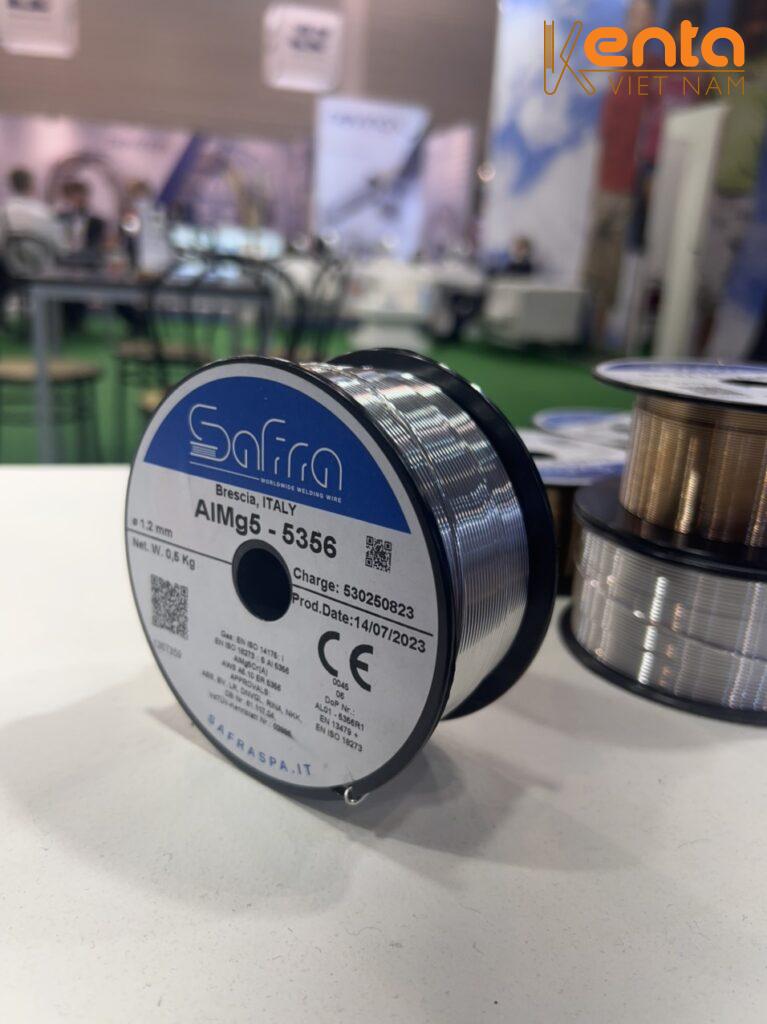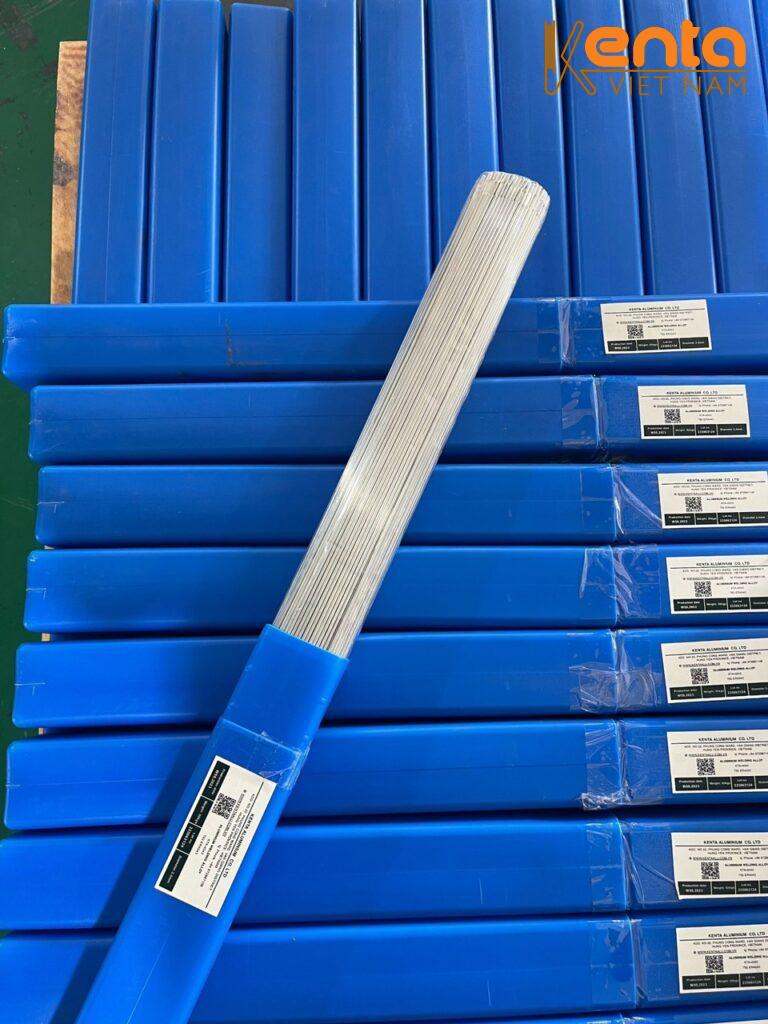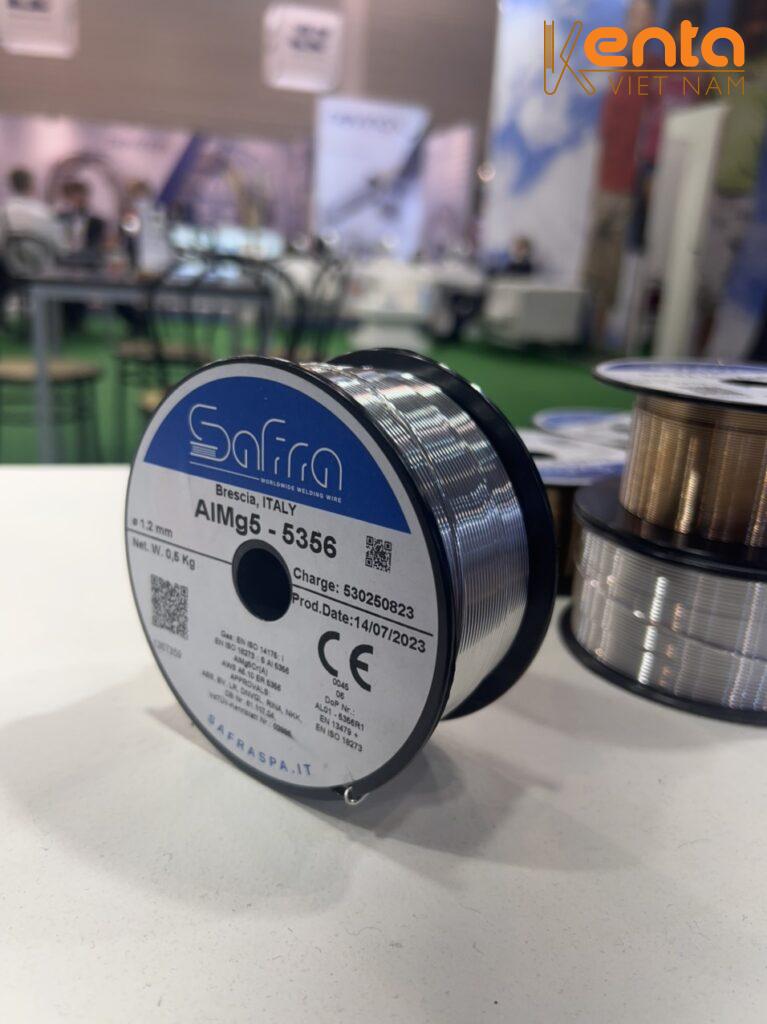Knowledge, Technology
5 TIPS FOR CHOOSING WELDING MATERIALS SUITABLE FOR THE PROJECT
Welding techniques and welding materials are decisive factors in creating a quality weld. Therefore, how to choose the right welding material for the project is always of great interest to many people. Let Kenta VietNam find out in the following article!

Tips for choosing suitable welding materials
What are welding materials? What are the types of welding processes?
There are many different types of welding processes with their own techniques and applications for the industry, including:
Arc welding
This category includes several common manual, semi-automatic, and automatic processes. These include metal inert gas (MIG) welding, stick welding, tungsten inert gas (TIG) welding also known as gas tungsten arc welding (GTAW), gas welding, metal active gas (MAG) welding, flux-cored arc welding (FCAW), gas metal arc welding (GMAW), submerged arc welding (SAW), shielded metal arc welding (SMAW), and plasma arc welding.
These techniques often use filler materials and are primarily used to join metals including stainless steel, aluminum, nickel and copper alloys, cobalt, and titanium. Arc welding processes are widely used in industries such as oil and gas, power, aerospace, automotive, etc.
Friction welding
Friction welding techniques join materials using mechanical friction. This can be done in various ways on different welding materials including steel, aluminum, or even wood.
Mechanical friction generates heat that softens the mixed materials to create a bond as they cool. The way the joining occurs depends on the exact process used, for example: friction stir welding (FSW), friction stir spot welding (FSSW), linear friction welding (LFW), and rotary friction welding (RFW).
Friction welding does not require the use of filler metal, flux, or shielding gas.
Friction is often used in aerospace applications because it is ideal for joining lightweight 'unweldable' aluminum alloys.
Friction processes are used in many industries and are also being explored as a method of joining wood without the use of adhesives or nails.
Electron beam welding
This fusion joining process uses a high-speed electron beam to join materials. The kinetic energy of the electrons converts into heat upon impact with the workpiece, causing the materials to melt together.
Electron beam welding (EBW) is performed in a vacuum (using a vacuum chamber) to prevent the beam from dissipating.
There are many common applications for EBW, such as being able to join thick sections. This means it can be applied in several industries from aerospace to nuclear energy and automotive to rail.

What are welding materials? What are the types of welding processes?
Laser welding
Used to join thermoplastics or metal pieces, this process uses a laser to provide concentrated heat ideal for narrow welds, deep welds, and high joining rates. Easily automated, the high welding speed at which this process can be performed makes it perfect for high-volume applications, such as in the automotive industry.
Laser beam welding can be performed in air rather than in a vacuum, such as electron beam joining.
Resistance welding
This is a fast process often used in the automotive industry. This process can be divided into two types, resistance spot welding and resistance seam welding.
Spot welding uses heat transferred between two electrodes applied to a small area when the workpieces are clamped together.
Seam welding is similar to spot welding except that the electrodes are replaced by rotating wheels to provide a continuous, leak-proof weld.
Why is it necessary to choose suitable welding materials?
Choosing the right welding material for each project is very important for the following reasons:
Mechanical properties: Each type of welding material has different mechanical properties, such as strength, ductility, and elongation. Choosing the right material helps ensure that the welds can withstand the required forces and loads.
Corrosion resistance:Some projects require welding materials with good corrosion resistance, especially in harsh environments. Choosing the right material helps increase the lifespan of the structure.
Working temperature: Each material has different heat resistance. Choosing the appropriate welding material helps the weld operate stably under specific temperature conditions.
Material homogeneity: Ensuring the welding material is compatible with the base material helps avoid cracking or damage during use.
Welding process: Different types of welding materials may require different welding processes (arc welding, MIG welding, TIG welding, etc.). Choosing the right material makes it easier to perform and control the welding process.
Cost: Choosing the right material also helps optimize costs. Some materials are expensive but offer better durability, so the initial investment can be more cost-effective in the long run.
Choosing the right welding material is an important part of design and construction to ensure the safety and efficiency of the project.

Why is it necessary to choose suitable welding materials?
5 tips for choosing appropriate welding materials
Determine the type of base material
Understanding the properties and composition of the welding material is an important factor in choosing a welding material compatible with the ongoing project.
Some factors to consider:
Chemical composition: Knowing the chemical composition of the base material helps select a welding material with good compatibility, avoiding cracking or damage.
Mechanical properties: Evaluate properties such as tensile strength, ductility, hardness, and heat resistance to choose appropriate welding materials.
Shape and size: The type and size of the base material can affect the choice of welding material, as some welding materials are more suitable for specific shapes.
Ứng dụng: Xác định ứng dụng cụ thể của kết cấu hàn để đảm bảo vật liệu hàn đáp ứng các yêu cầu về an toàn và hiệu suất.
Application: Determine the specific application of the welded structure to ensure the welding material meets safety and performance requirements.
Understanding these factors will help you choose the most suitable welding material for your project.

Top 5 tips for choosing appropriate welding materials
Consider the working environment
Evaluate environmental conditions (temperature, humidity, chemicals) to choose materials with corrosion resistance and heat resistance.
Temperature, humidity, and chemicals greatly determine the quality of the weld. Therefore, it is necessary to consider the working environment to choose the appropriate welding material.
Evaluate mechanical requirements
Choose welding materials based on the requirements for strength, ductility, and load-bearing capacity of the project.
The strength, ductility, and load-bearing capacity of the project are always top priorities. Therefore, when choosing welding materials, it is necessary to evaluate the mechanical requirements to select welding materials suitable for the project.
Learn about the welding process
Before choosing welding materials, it is necessary to know what the welding process is to select appropriate welding materials. There are many types of welding processes such as arc welding, friction welding, electron beam welding, laser welding, resistance welding. Each type of welding process has its own requirements for welding materials. Therefore, to achieve a quality weld, it is necessary to thoroughly research the welding process.
Calculate costs
Consider the cost of welding materials versus long-term benefits to choose the most economical solution.
The economic factor is always a top priority, so calculating costs is an essential factor when choosing welding materials.
Learn more at Kenta VietNam for more information about welding materials!



















